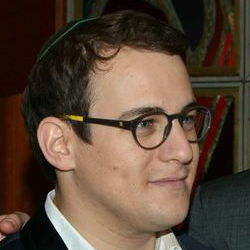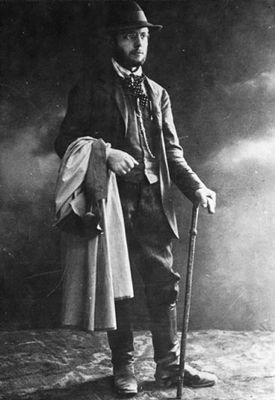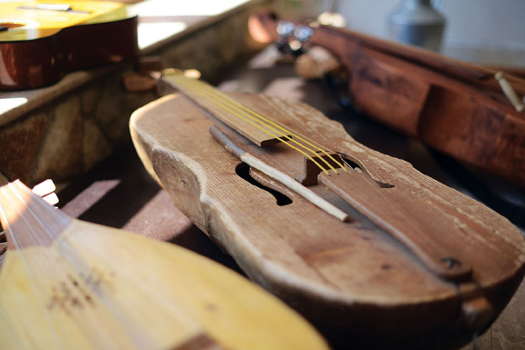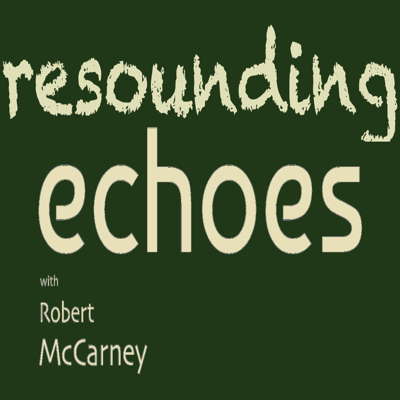 SPONSORED: Ensemble. Melting Rhapsody - Malcolm Miller enjoys Jack Liebeck and Danny Driver's 'Hebrew Melody' recital, plus a recital by David Aaron Carpenter.
SPONSORED: Ensemble. Melting Rhapsody - Malcolm Miller enjoys Jack Liebeck and Danny Driver's 'Hebrew Melody' recital, plus a recital by David Aaron Carpenter.
All sponsored features >>
BARTÓK: THE INSPIRED COLLECTOR

ANETT FODOR discusses
the Hungarian composer's love of
both folk music and nature
After the Austro-Hungarian Compromise of 1867, the Kingdom of Hungary experienced unprecedented political and economic development as a completely new era began. It was feared that the more than one-thousand-year-old traditions of Folk Art would soon disappear from even the smallest villages.
Béla Bartók (1881-1945) was aware of this. At the dawn of the twentieth century he set out with the aim of collecting hitherto undiscovered and unrecorded Folk music. He knew the country abounded in these priceless treasures.
At that time Hungary's territory was three times larger than it is today and many nationalities coexisted peacefully within it. Bartók wrote:
Talking about rural life, let me add my own observations concerning the relationship between peasants of different nationalities ... They live peacefully side by side, each speaking his own language, following his own customs and taking it for granted that his neighbour, who may be using another tongue, is doing the same. An overwhelming proof of this is offered by the words of the lyrical Folksongs themselves, which mirror the soul of the people. It is hard to find among them a single word or thought expressing animosity towards other nationalities.
Bartók, therefore, did not have to cross borders to study the Folk music of different ethnic groups. Inside one large kingdom he could explore Hungarian as well as Slovak, Romanian, Serbian, Croatian and Rhutenian Folk tunes. Some years later he did travel further afield visiting Algeria as well as Turkey to add to his collection of obsolescent Folk material, adding yet more colours to his palette. During his field trips Bartók had to cope with several problems. The Hungarian Kingdom's vast distances and low technology could make his work extremely difficult. Rural people were not always willing to sing for an outsider. One of his singers recalled:
We were working in the fields when a man about thirty-five with fair hair—not tall—came over to us and asked if anyone knew any old songs and would be prepared to sing them to him. There were many girls all together, but they were diffident and, in their shyness, said that they did not know any old songs. But I volunteered.

Bartók on a field trip in Csík county, circa 1903, by Transylvanian Hungarian photographer István Kováts (1881-1942)
The First World War (1914-1918) and the Treaty of Trianon (1920) significantly delayed and halted Bartók's extensive field research. After the partitioning of Hungary it was impossible for him to continue his collecting activity. Old Hungarian territories with some of the richest Folklore traditions went to Romania, Czechoslovakia and Yugoslavia. The new borders between these successor states and Hungary remained closed for a long time. Bartók became an unwanted guest in the new countries surronding what was now the new, much smaller Hungary.
During the 1920s - as he could not continue collecting - Bartók revised, compared and analysed thousands of melodies he had earlier recorded with his Edison phonograph on wax cyliders. He published a detailed monograph on Hungarian Folksongs (A magyar népdal, 1924). The book included carefully selected examples.
Bartók complained:
I work ten hours a day on Folkmusic material alone, but I would need to work twenty to make any progress. I should like so much to finish this work before the global disaster looming large, hits! At the current pace it will take me several more years.
He thought a lot about how to arrange, characterise and systematise the Folksongs within one single system. It was a large and complex undertaking. Yet, he did succeed and devised his own efficient method. It has been called the Bartók System.
He was one of the founders of ethnomusicology, which was at that time an almost new discipline. In 1935, for his pioneering comparative ethnomusicological work, he was elected a member of the Hungarian Academy of Sciences. However, some years later Bartók left Hungary. Before emigrating to the USA in 1940, he entrusted his valuable work to his friend Zoltán Kodály (1882-1967). This large, numbered collection contained about 13,500 annotated Folksongs.
After arriving in the USA, Bartók did not lose his enthusiasm for Folk music. He spent long months in the tiny phonograph listening room at Columbia University. He analysed and meticulously notated approximately 2,500 aluminium discs of Serbian, as well as Croatian Folksongs. This huge collection had been recorded in 1933/4 by Professor Milman Parry, the founder of the discipline of oral tradition. As Parry tragically died in 1935, his monumental work was continued by Albert B Lord, a scholar of Slavic and Comparative Literature. In a letter, Lord gave a brief description of the material to the Hungarian composer. The Parry Collection aroused Bartók's curiosity. It was a good opportunity for him to continue as well as further advance his analytical and comparative ethnomusicological work.
Some weeks ago I was lucky enough to have had an opportunity to observe firsthand how Folk music had influenced Bartók. As I was listening to the Hungarian Muzsikás Folkmusic Ensemble live, the music they were performing suddenly seemed very familiar, but at first I couldn't think why. A little later I realised I felt as though I were listening to Bartók. I had heard these Folk elements in his own music!
Here are two outstanding illustrations of this. The Muzsikás Folk Ensemble and the Danubia Orchestra are collaborating on the following. What an interesting and brave idea it is to juxtapose folk and classical musicians. In this way, the listener can admire both the traditional music and its Bartókian adaptation. I applaud this adventurous undertaking.
In the first recording, the listener can hear a Romanian Folk melody played on the chromatic end-blown wooden flute - called the kaval.

The kaval. Photo © eliznik.org.uk
Listen — A Romanian folk melody played on the Kaval
© Muzsikás Folk Ensemble :
Bartók undisputedly used the same melody on the piccolo in his Romanian Folk Dances.
Listen — Bartók: Romanian Folk Dances (excerpt)
© Danubia Orchestra :
In the Gyimes region, inhabitants used to be very poor, so the old Hungarian Folk ensembles frequently consisted of only two instruments. They were the violin and the so called ütűgardon - hit or beaten gardon in English.

The ütűgardon. Photo © tanchaz.hu
This archaic instrument's shape is similar to that of the 'cello. Even though the hit gardon has two strings, it is a percussion instrument. Its strings are beaten with a stick, so it sounds like a drum. In Bartók's Dance Suite this instrument's throbbing sound are imitated by a modern orchestra. In the second section of the example the attentive listener can clearly discern the simulation.
Listen — Folk melody on violin and ütűgardon, followed by
an excerpt from Bartók's Dance Suite
© Muzsikás Folk Ensemble / Danubia Orchestra :
It is lesser-known fact that Bartók was a physiolater. He collected specimens of insects, plants, minerals, snails, butterflies and even birdsong from all over the world. In the 1920s, his insect collection consisted of about 30-40 boxes. Regrettably, after he left Hungary nobody took care of them and they were gradually damaged by museum beetles.
Bartók drew a parallel between Enthomology and Folklore. He was convinced that a keen collector should examine more than just the insect or the song. His belief was that each insect's most secret life and each melody's historical background were of equal relevence and must also, therefore, be carefully scrutinised and analysed in minute detail. In so doing he was able to get closer to both nature and music.
Béla Bartók's love of nature is reflected in his so called 'Night Music'. This new musical style appears, for instance, in The Night's Music (Az éjszaka zenéje), which is the fourth part of 'Out of Doors' (A szabadban). The short solo piano movement is the precise musical portrayal of a hot Hungarian summer night. Almost all is quiet and peaceful under the starry sky. There is enigmatic stillness ... with the exception of some nocturnal creatures. Birds, frogs and crickets move making gentle sounds.
Listen — Bartók: 'Out of Doors' (excerpt)
© Estate of Hungarian-born pianist György Sándor (1912-2005) :
Bartók was amongst the first twentieth-century composers to have taken inspiration in large measure from Folk tunes. In 'The Influence of Peasant Music on Modern Music' (A parasztzene hatása az újabb műzenére, 1931) he mentioned three different compositional methods:
We may, for instance, take over a peasant melody unchanged or only slightly varied, write an accompaniment to it and possibly some opening and concluding phrases. This kind of work would show a certain analogy with Bach's treatment of chorales.
Another method, is the following: the composer does not make use of a real peasant melody, but invents his own imitation of one such. There is no true difference between this method and the one described above.
There is yet a third way, when neither peasant melodies nor imitations of peasant melodies are directly used in the composition itself, but it is pervaded throughout by this atmosphere. In this case we may say that the composer has completely absorbed the idiom of peasant music, which has now become his musical mother tongue.
Bartók had a wonderful mind and was a great musical innovator. His melodies, harmonies, rhythms, accents and musical structures as well as his unique blend of old and new textures, orchestration and succint lyrics result in his unforgettably distinctive and original style. The characteristics of peasant music permeate his oeuvre. Folk music really did become his musical mother tongue.
We can but imagine how his artistry would have developed had he not passed away in 1945.
Hungary

FURTHER INFORMATION ABOUT BÉLA BARTÓK


